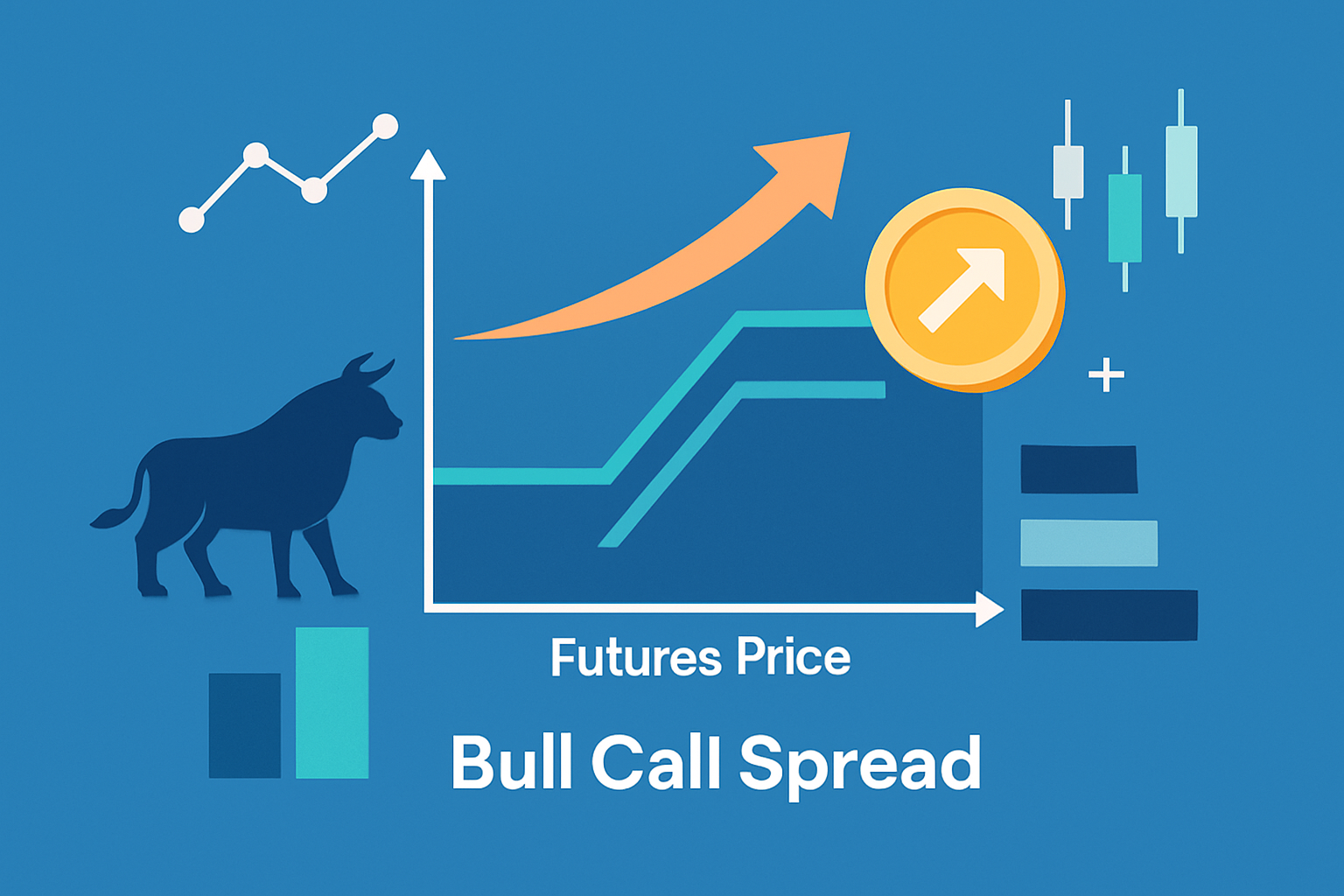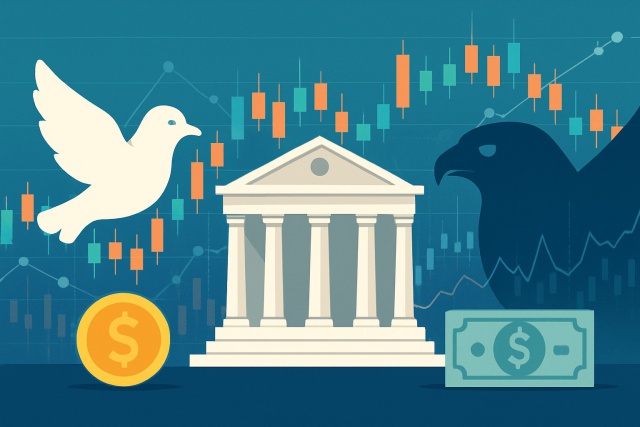
Futures Options Trading Mechanics Explained
Futures options blend flexibility and risk management in futures trading. This guide breaks down the...

Trading options on futures is a smart way to shake up your portfolio and keep risk in check while diving into the exciting world of futures markets. This article is your friendly guide, walking you through the basics — key terms, how the mechanics work and some handy strategies along the way. Whether you’re just dipping your toes in or already have some experience with futures or options, getting acquainted with this hybrid tool can open the door to more flexibility, extra leverage and a clearer picture of the risks involved.
It is really helpful to first get a solid grip on what futures contracts and options actually are. A futures contract is essentially a legal handshake — a binding agreement to buy or sell an asset at a predetermined price on a specific date down the line. These contracts appear frequently in commodities, currencies and various financial instruments. Options are a bit different because they are derivative agreements that give the buyer the right but not the obligation to buy or sell an underlying asset at a certain price before or on the expiration date. When you combine the two, options on futures offer traders a clever way to control futures contracts while keeping initial costs in check and defining their risk clearly.
Options on futures are contracts that give the buyer the right to buy (call) or sell (put) a futures contract at a predetermined strike price before the option expires. The key players in this game are the strike price, expiration date, premium paid and whether you are dealing with a call or put option. Each factor plays a important role in shaping the potential profit and the level of risk you’re signing up for.
| Feature | Futures Contracts | Options on Futures |
|---|---|---|
| Contract Type | Means you are locked into buying or selling at contract expiry — no backing out now | Gives you the choice, but not the headache, of whether to buy or sell futures |
| Upfront Cost | Usually requires a margin deposit, no premium upfront to sweat over | You shell out a premium right from the get-go |
| Risk Profile | The stakes are high with potentially unlimited losses or gains — buckle up | Your losses typically stop at the premium you paid, which is a nice safety net |
| Leverage | Comes with hefty leverage thanks to margin, so your small moves can pack a punch | Offers leverage too, but with risk neatly capped |
| Expiry Date | Fixed and set in stone for the contract | Also fixed, but tied specifically to the option |
| Exercise | You settle up at expiry or can cleverly offset before then | You can exercise or trade it before expiry, giving you some breathing room |
| Rights vs Obligations | Both parties are on the hook with binding obligations — no free rides here | Buyer enjoys rights; seller shoulders the obligations |
Trading options on futures offers traders a clever way to tap into leverage and guard against risks that are not easy to manage when dealing with futures alone. Rather than paying the full margin, traders pay a premium to gain exposure to the futures market while tying up less capital. Options also give traders the chance to take a position on market direction or hedge their current futures holdings while keeping potential losses in check.
Choose the futures market and the underlying asset you’re interested in—whether that’s commodities, indices or currencies. No one-size-fits-all here so pick what feels right.
Decide on the type of options contract—grab calls if you’re betting prices will go up or puts if you’re leaning toward a drop. Simple as that really.
Take a good look at the expiry date and strike price to find the sweet spot between your timeline and where you think prices might head. It’s a bit of an art honestly.
Figure out the premium cost for the option you want and double-check that you’ve got it covered upfront because nobody likes surprises when money’s on the line.
Place your order with a futures trading broker but make sure your account is approved for trading options first—it’s a little paperwork hurdle that pays off.
Keep a close watch on your position and be ready to adjust your strategy as the market throws curveballs or the expiration date creeps closer. Staying flexible is key.
Decide whether to exercise the option if it’s turning a profit, sell it before expiration to lock in gains or just let it expire worthless if things didn’t pan out. No shame in cutting your losses now and then.
Most brokerage platforms nowadays come with user-friendly interfaces that make finding and trading options on futures much easier. You will definitely want features like detailed options chains that clearly display strike prices and expiration dates and premiums. Getting comfortable with terms such as 'last price' and 'bid-ask spread' and 'implied volatility' is essential because they form the foundation of how options are priced. Platforms like TradingView and TrendSpider are more than just well-known names. They provide powerful charting and analysis tools that help you understand market trends and execute well-timed option entries and exits.
Navigating the world of trading options on futures can feel a bit like learning a new dance—sometimes you lead, sometimes you follow, and every step counts. Whether you are dipping your toes in or already on the floor, understanding the different strategies can make all the difference in turning those moves into smooth profits.
A bull call spread involves buying a call option at a lower strike price while simultaneously selling another call at a higher strike. This clever little setup limits your potential gains but also keeps the upfront premium you pay more manageable. Traders often lean on this strategy when they’re betting on a modest uptick in the underlying asset—kind of like hoping for a gentle breeze rather than a full-blown gale.

Diagram showing components and profit/loss zones of a bull call spread trading strategy on options on futures
Trading options on futures comes with its fair share of risks including the chance of losing the entire premium if the option expires worthless. As expiration creeps closer the option's value tends to slip away due to time decay. Sudden swings in volatility can send premium prices on a rollercoaster ride.
Beginners usually kick off with small positions and take a slow and steady approach to get a feel for how option pricing ticks. They often dabble on simulation platforms. Holding firm to disciplined stop-loss limits and giving serious thought to expiry dates and strike prices can help dodge common slip-ups
Tap into educational resources and simulators and use trading platforms like TradingView and TrendSpider to sharpen your skills for trading options on futures. TradingView stands out for its user-friendly charting and lively social networking features. These let you soak up knowledge from the community. Meanwhile, TrendSpider’s automated pattern recognition and dynamic alerts provide detailed market insights to help you fine-tune your trading decisions before you invest real cash.
Struggling to improve your trading performance? Edgewonk's advanced analytics tools are designed to give you the edge you need.
With detailed trade journaling, robust strategy analysis, and psychological insights, you'll gain a comprehensive understanding of your strengths and weaknesses. Don't miss out on this game-changing opportunity.
Traders, it's time to elevate your game. Edgewonk is the ultimate trading journal software designed to empower you with data-driven insights and personalized strategies. Take control of your trading journey and maximize your potential.
23 posts written
Driven by a passion for uncovering the hidden patterns that underlie market dynamics, Isla Wyndham brings a unique perspective to the realm of trading, blending quantitative analysis with a keen intuition for human behavior.
Read Articles
Futures options blend flexibility and risk management in futures trading. This guide breaks down the...

Unlock the profit potential of commodity options with this comprehensive guide featuring essential s...

El Salvador's adoption of Bitcoin as legal tender marks a groundbreaking experiment in national curr...

Discover how central banks' hawkish and dovish stances shape financial markets and affect your inves...
